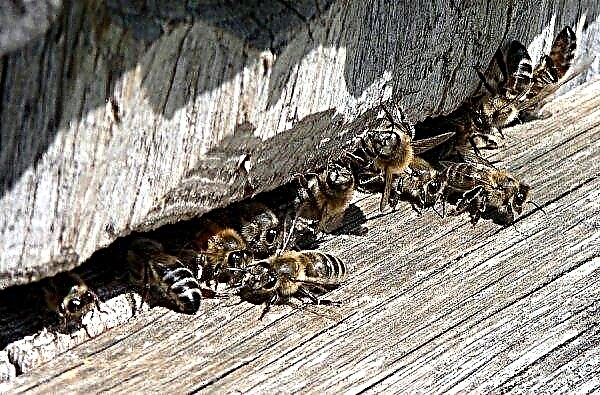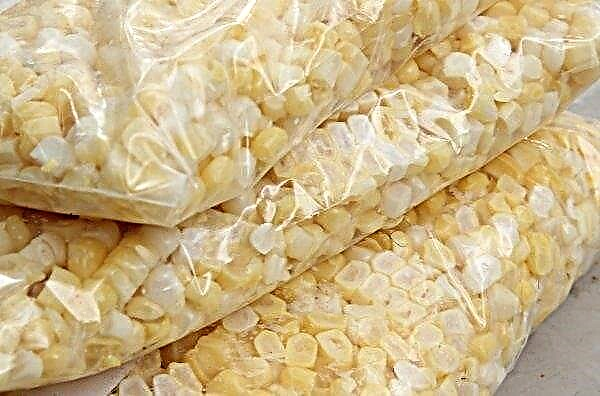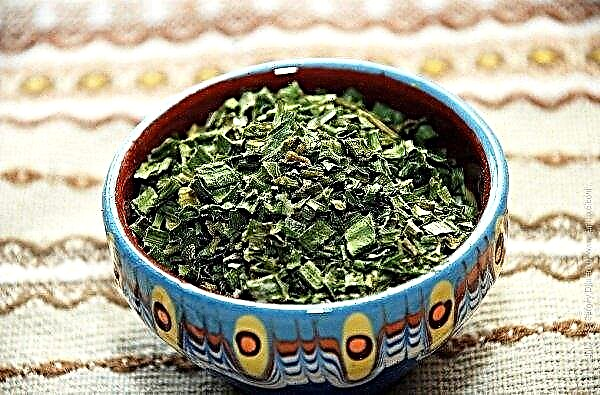Spirea are decorative shrubs that bloom plentifully from spring to autumn (depending on the variety), capable of decorating any garden plot with their presence, as they are widely used in landscape design. There are a large number of them, from which Tunberg spirea should be noted. The main characteristics and requirements for caring for these beautiful plants are discussed further in the article.
Description
The natural habitat of Thunberg spirea is the mountain slopes of modern China, Japan, Korea. The plant is a deciduous shrub reaching a height of up to 1.5 m with a dense crown. It has dense, narrowly elongated leaves up to 4 cm long and 0.5 cm wide. Thanks to this form of foliage, the shrub always looks decoratively: in spring and summer, bright green, in autumn - orange or fiery. The branches are densely covered with snow-white few flowers in the form of umbrellas with a rosette of small leaves at the base.
Flowering begins in late May and lasts until mid-July.. The fruits ripen by the end of June in the form of ripe small leaflets. Thunberg spiraea can be propagated with the help of seeds and cuttings. Cuttings are recommended to be planted at the end of summer (survival rate is about 36%) or in spring (survival rate is 60%). It tolerates drought normally, but can freeze in the cold winter, therefore it requires warming. It grows best in sunny, calm areas.
Important! Thunberg Spirea begins to bloom and bear fruit from 3 years of age.
Thunberg Spirea Varieties
The main varieties of Tunberg spirea include: Ogon, Fujino Pink, Compacta, Mt. Fuji, Yat Sabusa. They are most popular due to their appearance, unpretentious care and quick adaptability to a different climate that is different from the natural habitat.
Ogon
Ojon - translated from Japanese means "gold". It is a bush with a highly developed root system, up to 1.5 m high, up to 2 m wide and a semicircular crown. The branches are rather thin, medium thickened, upright, slightly hanging, each year they grow up to 20 cm. The bark on the shoots is smooth, brown-black. Leaflets are very narrow, up to 4 cm long and about 0.5 cm wide, with a pointed end, covered with a slight roughness. In the spring they are painted in bright green color, in the summer they darken a little, in the fall they first acquire a golden-orange color, and before falling off they turn crimson.
 The value of the plant is the change in the color scheme of foliage throughout the season. Also, the bush forms a large number of young shoots, which therefore requires the formation of a crown
The value of the plant is the change in the color scheme of foliage throughout the season. Also, the bush forms a large number of young shoots, which therefore requires the formation of a crown
This type of spirea begins to bloom early relative to other relatives. The flowering period lasts only a month - from early April to early May. The flowers are small up to 0.8 cm in diameter, snow-white, have a delicate aroma, collected in umbrella inflorescences, densely cover the final branches.
Odjon spirea can last up to 30 years. The culture tolerates drought well, does not suffer from excessive gas pollution in urban areas. Suitable for forming hedges, used in creating different compositions, for arranging flower bouquets.
Did you know? The analgesic and antipyretic agent “salicin glycoside” was isolated from spirea in 1839. Later, a medicine appeared - acetylsalicylic acid or aspirin (“a” for “acetyl”, “spirin” for “spirea”).
Fujino pink
Fujino Pink - deciduous shrub up to 1.2 m high, about 1.5 m wide. It forms a sprawling, dense crown in the shape of a ball. It has thin drooping shoots on which lanceolate small leaves grow 4 cm long and 0.5 cm wide. In summer, the foliage is painted in bright green, in autumn it changes to red. The flowers have a light pink color, similar to apple, collected in numerous inflorescences. The flowering period begins from May to June and lasts about 3 weeks. Prefers sunny places. Undemanding to the composition of the soil. It withstands frosts down to -29 ° С.
 Fujino Pink attracts gardeners with its beautiful spreading crown and foliage that changes color throughout the season from light pink to fiery red. Widely used in landscape design
Fujino Pink attracts gardeners with its beautiful spreading crown and foliage that changes color throughout the season from light pink to fiery red. Widely used in landscape design
Compacta
Compacta is another representative of Tunberg's spirea, characterized by a compact, elegant, dense, rounded crown. The bush reaches a height of 0.6 to 2 m and a width of 0.6 to 1 m. The leaves are narrow, jagged, up to 4 cm long, in the spring painted in lemon-green color, which by the autumn acquires an orange hue.
Thin branches densely covered with white flowers collected in umbrella inflorescences. Flowering occurs in the month of May and lasts about 3 weeks.
 The variety is characterized by long and slow growth, poor tolerance of frost, therefore, it needs shelter of the root system for the winter. Due to its beautiful crown shape, it is highly regarded among professionals and gardeners
The variety is characterized by long and slow growth, poor tolerance of frost, therefore, it needs shelter of the root system for the winter. Due to its beautiful crown shape, it is highly regarded among professionals and gardeners
Mt. Fuji
Mt. Fuji is a plant that grows to a height of 1.2 m and a width of about 1 m. It differs from other varieties in that has a decorative, variegated foliage, ranging from milk to light green. The leaves are thin, wavy, up to 4 cm long and 0.5 cm wide. The flowers have 5 white round petals, collected in small inflorescences. Flowering is plentiful from May to June. Used to create decorative compositions on flower beds.

Yat sabusa
Yat Sabusa is a Tunberg spirea variety with the characteristic features of its species. Namely: the height of the bush is up to 1.2 m, the width is about 1.5 m. The crown is dense, round. The shoots are thin, curved. Leaves are lanceolate, bright green, 4 cm long, 0.5 m wide. A distinctive feature of Yat Sabusa are small terry flowers, numbering many petals, with a light green center, completely covering the branches, collected in small inflorescences. As with other relatives, the flowering period falls in May and lasts about 3 weeks.
 Due to its beautiful flowering, it is widely used as a hedge, planted on flower beds in combination with other plants
Due to its beautiful flowering, it is widely used as a hedge, planted on flower beds in combination with other plants
Landing rules
Growing Thunberg spirea in your summer cottage, you must adhere to the main rules of planting, on which survival, further growth and development of plants directly depend. Specialists advise planting seedlings in spring (before buds open) and in autumn (when leaves fall).
Important! For planting spirea, you need to choose places with uniform lighting. Otherwise, the crown of the bush will lose its rounded shape and become one-sided.
This procedure consists of the following steps:
- In advance, dig a hole with a depth of 50–70 cm. Its size should be 25% larger than the root system of the spirea.
- Leave a distance between bushes of 0.4-0.5 cm, between rows - 0.3-0.4 cm.
- At the bottom of the pit, install drainage from broken brick or sand.
- Moisturize the roots of the seedling with water, shorten the very overgrown, cut off the sick and damaged.
- Dip the spiraea into the pit, sprinkle it with earth, lightly tamp.
- The root neck should be flush with the soil.
- Pour abundantly with warm, settled water.

Recommended to land in September, in the conditions of cloudy and rainy weather. Thanks to this, shrubs will take root in a new place faster.
Care and trimming
Even unpretentious plants such as Tunberg’s spiraea, need proper care, ensuring lush and plentiful flowering. It consists of regular watering, mulching of the near-stem zone, fertilizing, weed control, loosening the soil, pruning the crown, warming for the winter.
Did you know? The Japanese in 1825 erected a monument to Peter Thunberg during his lifetime because he, while visiting them, helped to stop the spread of syphilis imported from Europe.
Spirea should be watered only during a prolonged drought, pouring about 2 buckets of water under each bush. To retain moisture, it is recommended to cover the area around the trunk with a thick layer of mulch (peat, sawdust, husk from nuts or seeds). It is advisable to feed plants only if they grow on infertile soils. To do this, you can use the drug "Kemira-Lux" (100-120 g per 1 m²). Regular weed removal, as well as loosening of the soil will provide oxygen access to plant roots.
Thunberg Spiraea belong to early flowering plants and do not need special pruning of the crown. It is enough for them:
- in April-May, shorten the shoots a little;
- 1 time in 2 years to cut weak, sick and damaged branches;
- after about 7 years, remove the old branches;
- if the bush is already old, cut all the shoots under the stump, leaving the most powerful branches from the young shoots.

You can warm the spirea after leaf fall. It is necessary to carry out sanitary pruning of the crown of bushes, thoroughly loosen the soil, water it abundantly, cover it with a layer of 15–20 cm of fallen leaves, sawdust, peat. Thanks to such events, the plants will perfectly tolerate frosts and will bloom abundantly in spring.

Thanks to its universal application, Tunberg spiraea is worthy of being in every garden. After all, not only flowers of shrubs, but also leaves that change color throughout the season possess decorative qualities. Plants can satisfy the tastes of even the most fastidious gardeners and delight them with their appearance for a very long time.












